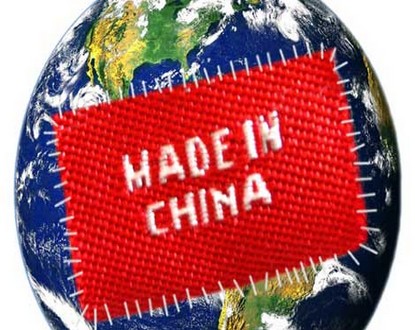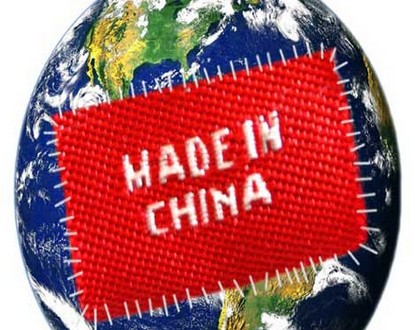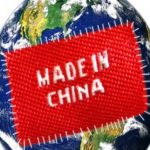China is currently the primary supplier of Europe, and Europe is China’s second-largest supplier. The ties are close, yet this country still projects an ambiguous image to its partners. It alarms them due to its dominant position in the global economy.
At the same time, China is seen as a source of opportunities. Opportunities that require entry keys and a good understanding of the Chinese strategy to be fully realized.

The main message is that the “Chinese bet” should be attempted, and it’s essential to actively engage in developing trade relations with this country without underestimating the risks and difficulties such a strategy entails.
China’s Position in the Global Economy
The first observation that stands out is China’s increasing weight in global trade, particularly through a shift in industrial production from Europe and a profound deindustrialization, notably in the United States but also in France.
However, the import content of Chinese exports is high (46% in total), very high for sophisticated products (from 60 to 95% depending on the products considered). This is made possible by a segmentation of the production chain in which Europe and the United States do not participate.
China’s main partners are actually Asian countries.
Meanwhile, China’s unit labor costs remain low: in 2010, they were approximately 60% of those in the United States and less than 50% of those in the Eurozone or France. The authors note that competition from China has probably contributed to restraining wage increases in OECD countries since the late 1990s, and as long as it continues to gain market shares, it will have a disinflationary impact on the rest of the world.
An additional concern involves China’s role in the consumption of raw materials, rare resources, and more broadly, the impact of its economic activity on the environment. The consumption of raw materials logically follows the cycle of industrial production and stockpiling. Its place in global consumption has become very significant, reaching about 10% for oil and almost 50% for metals in 2010. At the same time, China has surpassed the United States regarding CO2 emissions, increasing by 5 to 7% per year, and is likely to intensify in the coming years.
On the financial level, the yuan has been appreciating in real terms since 2005, and projections suggest that China’s trade surplus should decrease, which has significant implications for the currency policy to be adopted with this country.
The New Chinese Growth Strategy
China’s economic development is driven by a proactive economic policy, not a market logic. It applies a principle of import substitution through the progressive mastery of initially imported technologies based on its price competitiveness. Its policy of opening up to foreign investments is ambiguous because it is heavily controlled by the authorities, notably through the imposition of “joint ventures” for companies wishing to enter the Chinese market. This has resulted in slower progress and a relatively low level of openness in the Chinese economy since the early 2000s, while the contribution of Chinese value-added in its exports is low (for example, it is estimated at 4% for computing). This suggests that export successes are still largely based on their comparative advantage in labor costs.
The technological catch-up process is indeed underway, but it is far from complete. Blocking factors, analyzed in the report, persist, such as the still incomplete agrarian reform, limits on workers’ mobility within the country (the hukou system), the significant share of state-owned enterprises in the economy, and the absence of a stable and transparent legal system.
China’s growth strategy is based on several economic policy biases, notably excessively low wages, energy price subsidies, credit allocation to large enterprises, absence of penalties for environmental costs, and excessively low-interest rates.
The current reforms and the twelfth five-year plan (2011-2015) seem to move toward reducing most of these biases. Nevertheless, while China’s two major strategic objectives remain social stability and technological catch-up, the economic crisis necessitates finding new growth drivers, notably by giving a leading role to domestic demand. A broad consensus has emerged on the need to reorient growth accordingly, but there are numerous obstacles, the reform schedule remains uncertain, and the implementation of the stimulus plan, based on infrastructure and state-owned enterprises, has represented a step backward or at least a pause.
China’s financial situation must also be considered. Savings are abundant and mostly held in liquid form. The country’s financial underdevelopment appears as an obstacle to balanced and sustainable growth. The insufficient access of private enterprises to bank credit leads to weak consumption and pushes China toward export-driven growth. The Chinese government is aware of this and is trying to develop
credit for SMEs.
Several scenarios could slow down or even disrupt Chinese growth: a financial crisis, a social crisis, a loss of competitiveness, demographic issues, and/or an increase in raw material prices.
The Chinese authorities are aware of the risks of a financial and social crisis.
They also believe that even with rapid wage increases, China’s advantage in cost competitiveness is sustainable and that demographic changes will not become a problem until the 2020s.
Ultimately, the risk of a sharp increase in raw material prices appears to be the most serious to them.
Main Recommendations
Firstly, governments should not focus on exchange rates as much as they do today. The main key to reducing the trade surplus is the excessive savings, and it’s essential to insist on the new orientation of internal growth. While the yuan is certainly undervalued, its real appreciation is significant, especially since a policy of rapid wage increases has been implemented, which can only reinforce it. The issue of exchange rates is not the obsessive concern that it’s sometimes portrayed to be.
Instead, governments should focus on opening up the Chinese market, which is still too protected, as well as on the business environment – notably the protection of intellectual property rights, which remains very imperfect.
The European Union and China undoubtedly have more common interests than the United States and China, which has strong implications for the strategy to be implemented with Beijing. A cooperation between Europe and China on the issue of international monetary system reform seems useful and feasible.
Finally, companies must be aware of the difficulties they will face when entering the Chinese market. Given the significant uncertainties, it’s wise to operate under conditions that are quickly profitable. Above all, it’s essential to recognize that the “Chinese bet” cannot succeed without a complete and lasting commitment. The Western companies that have decided to establish a part of their headquarters in China are indeed showing the way forward.



